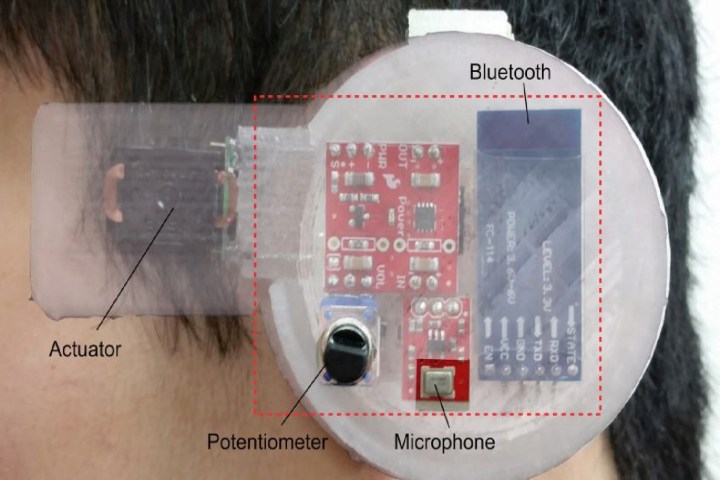
The latest example is a project coming out of the University of California, Berkeley, where researchers have developed a 3D-printed device worn over the ear, called (wait for it!) “Earable.”
“We are utilizing 3D printing to build sensors that we can fit into an individual’s ear and continuously measure the core temperature,” Ali Javey, professor of Electrical Engineering and Computer Science, told Digital Trends. “This device utilizes the unique feature of 3D-printing process which is that every printed object can be made to the desired dimensions and specs. The work represents a class of ‘structural electronics’ where sensors and electronics are embedded in the fabricated structure itself.
The so-called “Earable” device measures core temperature using special infrared sensors. While there have been fitness-tracking devices that measure skin temperature on the market for a while, these are not the same as core temperature since they respond to factors like outside temperature. Core temperature, meanwhile, measures the inner body temperature: something which serves as a key indicator of a person’s overall well-being. In this way, you can think of the Earable device like a long-term oral thermometer.

“Monitoring core body temperature in a continuous fashion could have important medical applications,” Javey continued. “Examples can include monitoring patients with severe conditions, or infants.” According to the investigators, core body temperature is “one of the most important basic medical indicators of fever, insomnia, fatigue, metabolic functionality, and depression.”
The wearables incorporates some additional smart tech, such as a microphone and actuator that allows the device to also act as a “bone conduction hearing aid.” This is something of a necessity since users will be losing a good portion of their hearing by covering their ear with the device. It also has a Bluetooth module for wirelessly transmitting the core temperature data to a paired mobile device.
Up next, Javey said the goal is to work on miniaturizing the device, as well as expanding the range of sensors that are implemented. A paper describing the work was published in the journal ACS Sensors.
Editors' Recommendations
- GPS-tracking, 3D-printed decoy eggs can help root out illegal poachers
- Edelkrone’s 3D-printed wearable monopod fits in your pocket and your budget


